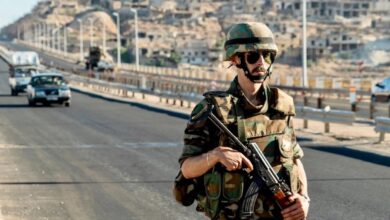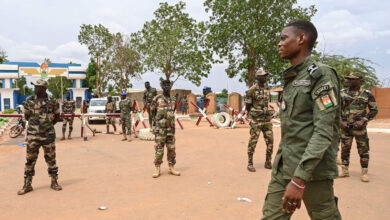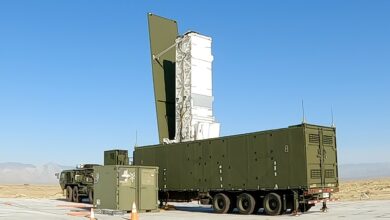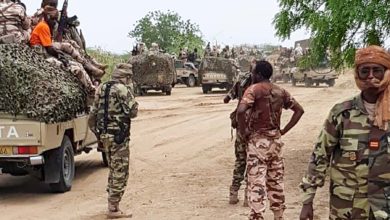Six Malaysians were involved in Basilan suicide bomb plot, expert says
KOTA KINABALU, Malaysia – Six Malaysians were involved in plotting the first ever suicide bombing by militants in the Philippines, which took 10 lives in July this year, a Filipino terrorism expert has said.
The bombing was carried out on July 31 at a security checkpoint in Lamitan in the southern province of Basilan, and was claimed by Islamic State.
ISIS identified the perpetrator as a Moroccan named as Abu Kathir Al-Maghribi, and published his image on its propaganda outlet Amaq.
The Armed Forces of the Philippines blamed the bombing on Abu Sayyaf, a local jihadist group which has pledged allegiance to ISIS.
“The Abu Sayyaf masterminded the July Basilan suicide bombing with help from Moroccan and Malaysian foreign terrorist fighters,” Rommel Banlaoi, Chairman of the Philippine Institute for Peace and Violence and Terrorism Research Professor told The Defense Post.
“Government intelligence report indicated that as early as 19 July 2018, Abu Fati and four others were planning to conduct a bombing operation in Lamitan. On 30 June 2018, six Malaysian nationals arrived in Tuburan, Basilan to assist in the terror plot in Lamitan,” Banlaoi said.
Abu Fati is the kunya or nom de guerre used by Mike Lijal, an Abu Sayyaf commander. Little is known about Lijal but Benar News reported that intelligence sources believe he is a trusted aide to Abu Sayyaf’s Basilan leader Furuji Indama.
Ustad allegedly facilitated Malaysian foreign fighters’ transit to the Philippines
Two days after the attack, the Philippine Army’s 7th Scout Ranger Company arrested Muslim cleric Jainul Malialim Indamin, also known as Abdulgani, in connection with the Lamitan bombing.
“Government operatives arrested the 58-year old ustad [cleric] because of tips coming from informants that Abdulgani had full knowledge of the bombing,” said Banlaoi.
“Abdulgani facilitated the entry of the aforementioned Malaysian foreign fighters, who came to Basilan from Sabah in Malaysian Borneo. They arrived after the Marawi war.”
More than 1,200 people, mostly militants, were killed during the battle for Marawi in Mindanao, when Abu Sayyaf and the Maute group, both part of Islamic State East Asia, fought for control of the Philippine city between May and October.
AFP Western Mindanao Command spokesperson Lieutenant Colonel Gerry Besana confirmed Banlaoi’s information.
“Yes, these were already validated knowing the fact that the foreign fighters have been in the area for quite some time fighting with the local terrorist group,” Besana told The Defense Post.
“All joint task forces are focused on tracking and decimating all of them per campaign plan.”
The Defense Post in November revealed foreign fighters traveled to the southern Philippines via six routes before and after the Marawi battle. Those routes begin in Sabah in Malaysia, and Manado, a city in Sulawesi, Indonesia.
Banlaoi earlier told The Defense Post about 100 foreign fighters from 16 countries had entered the southern Philippines after the Marawi war.
In that report, Banlaoi said most of the militants were from neighboring Indonesia and Malaysia, but there were also people from Saudi Arabia, Turkey, Morocco, Spain, France, Tunisia, Iraq, Somalia, Egypt, Yemen, Libya, Pakistan, Bangladesh and China.
44 foreign fighters identified in the Philippines
“Seven Malaysians linked to ISIS are being hunted by law enforcement authorities in Mindanao. Their full identities have been established but not disclosed in order not to undermine operations,” Banlaoi told The Defense Post.
Banlaoi said it is unclear whether the six Malaysians involved in the Lamitan bombing are among those seven, “but I am sure all fully identified foreign fighters are under surveillance and manhunt operations,” he said.
“And there are 24 Indonesians, who arrived before and after Marawi, and are being sought by the Philippine authorities,” he added.
When asked if any of the Malaysians and Indonesians were involved in the Marawi conflict, Banlaoi declined to comment due to an ongoing manhunt for them.
He also declined to specify whether the operations are being carried out in jungles or urban areas.
However, Banlaoi, who is also President of the Philippine Society for Intelligence and Security Studies, said 44 of the foreign fighters had been fully identified by both name and alias.
“More than 40 others have aliases but their specific identities have not been strongly established,” he said. “Twenty other reported foreign fighters are still being validated as evidence of their arrivals has not been fully collected.”
“The Philippine military only acknowledges the 44 confirmed foreign fighters in the Philippines. The rest of them that were reported to have entered in the Philippines are still under investigations, validations and confirmations. A few arrived before Marawi but most after Marawi.”
Banloai previously told The Defense post that 32 foreign militants were killed during the battle of Marawi, including children.
The Defense Post has contacted Malaysian police for comments on the alleged involvement of Malaysians in the Lamitan bombing but has not yet received a response.
The southern Philippines will continue to be a draw for foreign fighters
Zachary Abuza, a professor at the National War College in Washington D.C., said the alleged involvement of Malaysians in planning the Lamitan bombing is an interesting development but not totally surprising.
He said the Philippine military and government have every reason to downplay the role of foreign fighters.
“Mindanao and the southern Philippines will continue to be a draw for foreign fighters because it is the only place in the region that they can control physical territory,” Abuza, an expert in Southeast Asian politics and security, told The Defense Post.
“While I personally think the declaration of ISEA [Islamic State East Asia] remains aspirational, the fact is that you can’t be a province of the caliphate without territory. Second, I still think that the most important role of foreign fighters is that they can help bridge the parochial divides and forge alliances between the various Filipino groups that are divided over geography and ego.”
“For these two reasons, I expect Mindanao to be even more important to regional militants. I am still convinced that the Surabaya and Lamitan attacks were really attempts to shame or cajole others to being more militant.”
Abuza was referring to a series of suicide bombings by families, including children, in Indonesia’s second largest city Surabaya in May.
Coordinated suicide bomb attacks perpetrated by a single family struck three churches in Surabaya killing more than a dozen people, and the following day a family carried out a suicide bomb attack on a police headquarters in Surabaya. A third family bomb plot was foiled.
Those attacks were linked to Jamaah Anshar Daulah, a group with ties to Islamic State also connected to a deadly attack in the capital, Jakarta, in 2016. JAD was banned in July.
While suicide bombings had been foiled in Indonesia in the past, the Surabaya attacks were the first suicide bombings in the world’s most populous Muslim nation.
In Lamitan, a van carrying improvised bombs driven by the Moroccan suspect exploded after it was stopped for inspection at the security checkpoint.
The Philippine authorities later said they believed the Abu Sayyaf unit responsible for the incident may have intended to explode the bomb during a festival for school children scheduled for the morning of July 31.
When asked about why Malaysian militants would want to target children, a Malaysian security expert claimed some terrorists do not differentiate combatants from non-combatants.
“There are no moralistic values in terrorism. What’s important is their objective,” Dr. Ramli Dollah, a lecturer at Universiti Malaysia Sabah told The Defense Post.
“Malaysian terrorists are no different from their international counterparts. They only want to attract international attention. They will do anything to achieve this end.”
“The involvement of Malaysians in issues in the southern Philippines is not something new, what more when conflicts in this region are touted by the terrorists as an Islamic struggle against the infidels.”
Dead or alive: Are Malaysia ISIS militants among Philippines foreign fighter fatalities?












